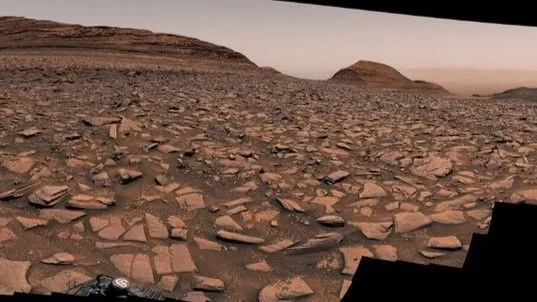
NASA's Curiosity Rover Unveils Breathtaking 360-Degree Mars Panorama and Discovers Mysterious Sulfur Stones!
2024-11-21
Author: Sarah
After more than a decade of relentless exploration, NASA's Curiosity rover continues to unravel the secrets of the Red Planet, recently revealing stunning 360-degree panoramic views of the ancient Gediz Vallis channel and uncovering strange white sulfur stones that are sparking scientific intrigue.
Launched in 2011, and developed by NASA's Jet Propulsion Laboratory (JPL), Curiosity has traversed the rocky Martian landscape, shedding light on its geological history. Since ascending the 5.5-kilometer tall Mount Sharp, or Aeolis Mons, Curiosity has encountered fascinating features that may have been shaped by water—an essential ingredient for life as we know it.
Earlier this year, Curiosity ventured into the Gediz Vallis channel, which is believed to carry the fingerprints of ancient waterways, or perhaps is sculpted by fierce winds or landslides from Mount Sharp. In a thrilling update shared by JPL, a captivating interactive 360-degree view of this Martian terrain was released, allowing enthusiasts to explore the alien landscape by rotating their devices or moving their mouse on a computer.
The panoramic image showcases striking geological features including Kukenán Butte, Pinnacle Ridge, Texoli Butte, and a distant view of the Gale Crater Rim, igniting excitement among scientists and space aficionados alike.
Notably, among the boulders strewn across Gediz Vallis, Curiosity has identified peculiar white sulfur stones. Upon inspection, the rover found yellow sulfur crystals inside these stones, raising questions about their origin since sulfur on Earth is usually associated with hot springs and volcanic activity—none of which have been detected on Mars. “We looked at the sulfur field from every angle,” stated Ashwin Vasavada, Curiosity's project scientist. “Now, we have a fun puzzle to solve.”
The research team is investigating these discoveries further, piecing together clues about the environmental conditions that led to the formation of these sulfur deposits. The curiosity surrounding the sulfur stones adds another layer to Curiosity's contributions to understanding Mars' habitability.
In the rover's upcoming adventures, it plans to explore an intriguing geological formation known as “the boxwork,” which spans an impressive six to twelve miles along Mount Sharp. First observed by NASA’s Mars Reconnaissance Orbiter in 2006, this area features unique mineral patterns that may have formed in environments conducive to microbial life—a tantalizing prospect for astrobiology.
Kirsten Siebach, a scientist working with Curiosity, expressed enthusiasm about the potential discoveries: “These ridges may contain minerals that crystallized in warmer, liquid-water conditions beneath the Martian surface, similar to what early Earth microbes might have experienced.”
As Curiosity gears up for its next phase of exploration, researchers at JPL are eager to analyze the data collected and formulate theories about the geological history of Gediz Vallis. With each new finding, Curiosity remains a testament to human curiosity and our quest to understand our place in the cosmos. What other astonishing revelations might lie ahead as Curiosity continues its mission on Mars? Stay tuned as we uncover the mysteries of the Red Planet!

 Brasil (PT)
Brasil (PT)
 Canada (EN)
Canada (EN)
 Chile (ES)
Chile (ES)
 España (ES)
España (ES)
 France (FR)
France (FR)
 Hong Kong (EN)
Hong Kong (EN)
 Italia (IT)
Italia (IT)
 日本 (JA)
日本 (JA)
 Magyarország (HU)
Magyarország (HU)
 Norge (NO)
Norge (NO)
 Polska (PL)
Polska (PL)
 Schweiz (DE)
Schweiz (DE)
 Singapore (EN)
Singapore (EN)
 Sverige (SV)
Sverige (SV)
 Suomi (FI)
Suomi (FI)
 Türkiye (TR)
Türkiye (TR)